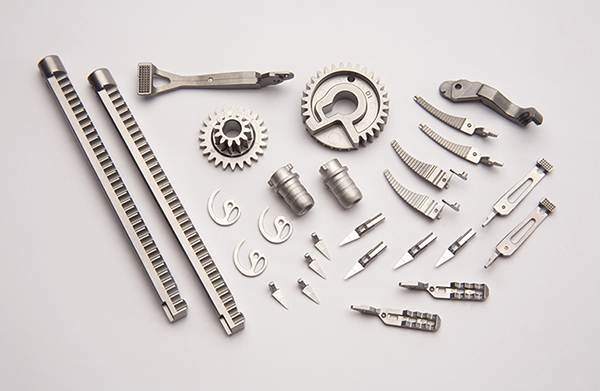Let’s go straight to the point. Injection molding is a manufacturing process used in developing products from plastic trinkets. Some of the items manufactured using this process include automotive body parts, water bottles, containers, and cell phone cases. Most of the plastic parts that we use every day are produced using this process. This method of manufacturing plastic parts has widened its boundaries in design and enabled substantial alternatives to conventional materials due to its flexibility.
How does Injection Molding work?
The injection machine has three major parts – the screw, the heated barrel, and the feed hopper. The plastic granules used in making the parts are fed into a hot barrel by a hopper. Most of the plastic is in granular or powder form. But for silicone rubber, it could be in liquid form that does not require heating.
The material is melted with the use of frictional action of a reciprocating screw and the heater bands. The melted material is then injected using the nozzle and into the mold cavity. The plastic cools and solidifies while still on the mold cavity. Once it becomes hardened, it will be ejected with the use of the ejector pins.
The machine sizes may vary from five tons of clamping force to more than 6000. Machines are classified according to tonnage, or on the clamping force or pressure. Too much or too little pressure can affect the part quality.
There are lots of reasons why you should use this process in producing the plastic components. Some of which are discussed below.

metal injection molded parts*
Advantages of Injection Molding
As mentioned above, this is an extremely versatile process when it comes to manufacturing plastic parts. As compared to other methods, it has multiple advantages. Not only because it is simpler than others and reliable, but it is also quite efficient.
1. Very Efficient
One of the reasons why this is the preferred process in producing plastic parts is because it is very efficient. The process is fast than other methods, and the output rate is quite high which makes it cost-effective. The speed will depend on how complex the project is and the size of the mold.
Since each cycle will only take up to 120 seconds, a higher number of molds can be produced in the shortest time possible.
2. Complex Part Design
If you need to work on complex parts and uniformity, and also to produce millions of identical parts, this process is very reliable. You need to consider the key design elements to optimize the effectiveness of high-volume molding.
The part design should be produced to maximize the efficiency essential in high-volume molding. To develop parts consistently and with high-quality, you need to have the right design. If you don’t have the design, it might cost you a lot when there are mistakes in processing.
Some of the design elements that are integral in the injection process include rib design, corner transitions, wall thickness, gate placement, boss design, and weld lines.
3. Enhanced Strength
With this process, you can use fillers in the molds. The fillers reduce the plastic density during the molding stage and it helps in adding strength to the component after it has been molded. In areas where parts need to be sturdy and durable, this process has an option that is not offered to other methods.
4. Ability to Use Different Types of Plastic at the Same Time
With injection molding, you can use various types of plastic at the same time. This is one of the primary reasons why many companies use this process in manufacturing the plastic components of their product. It takes away their concern about using a specific type of plastic.
5. Reduced Waste
The molding process usually produced a huge amount of excess plastic, it’s a must that the company has green manufacturing initiatives and optimum safety. Having a system to recycle the excess plastic is a good idea. An eco-friendly company uses machinery that will help them minimize waste, packaging, and transportation.
6. Low Labor Costs
In injection molding, the labor costs are quite low as compared to other processes. The ability to generate the components at a high level with higher output helps lower the cost efficiency and effectiveness.
The molding machine usually runs with a self-gating, automatic tool to keep the operations updated and continuous production, with less supervision.
Bottom Line
With the injection molding process, the parts produced are of high-quality and have higher output. Also, there is less work after the production of molds because the components produced have more or less a finished appearance. So, if you need to produce a huge amount of plastic parts, this is the recommended process you can use.
Among the many processes used in manufacturing plastic parts, this method is the most eco-friendly one. The plastic wastes produced during the process are collected and re-used. Thus, it generates less waste.
Reference
*Image from https://www.medicaldesignandoutsourcing.com/
